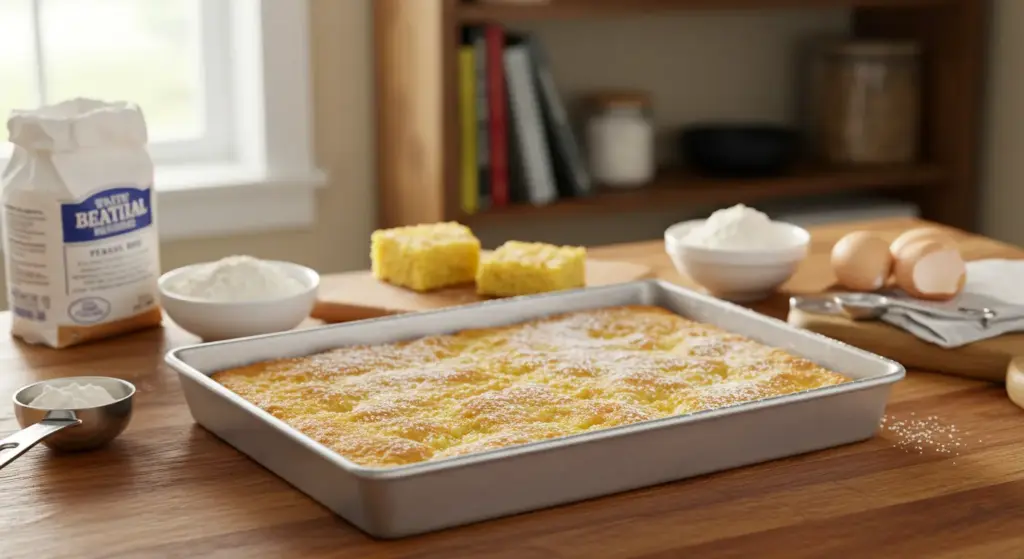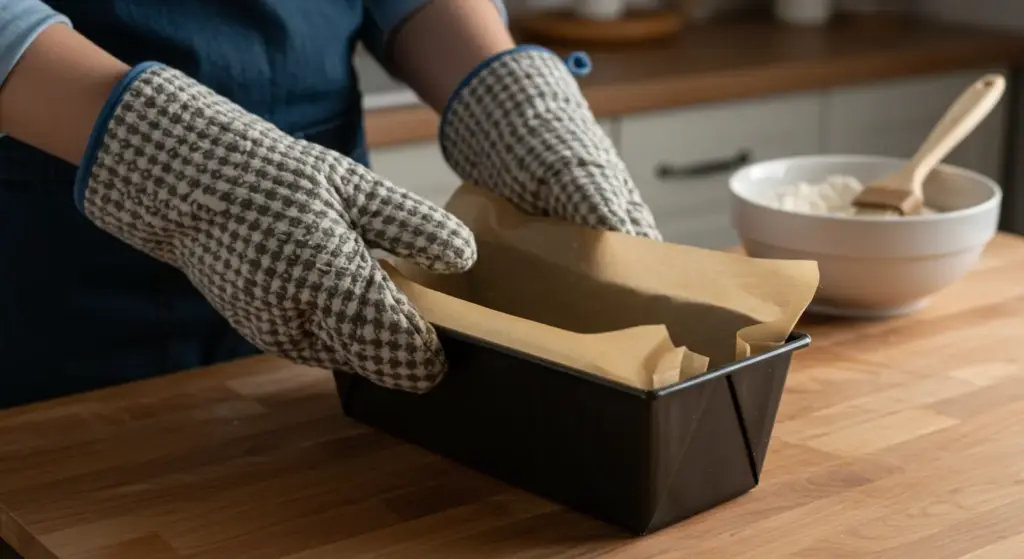Introduction: Welcome to Your Baking Journey! (The Beginner’s Empathy Hook)
Feeling overwhelmed by the endless array of baking tools and bakeware for beginners available in stores and online? You’re not alone! Walking into the baking aisle can feel like entering a foreign country where everyone speaks in “bundt pans” and “springform” terminology.
This comprehensive guide cuts through the noise, showing you exactly what beginner bakeware you really need to start your baking adventure without breaking the bank or cluttering your kitchen with unnecessary gadgets. Whether you’re dreaming of homemade chocolate chip cookies or planning your first birthday cake, we’ll walk you through the essential first baking equipment that will set you up for sweet success.
By the end of this guide, you’ll understand which pieces are must-haves versus nice-to-haves, how to choose the right materials for your needs, and how to care for your investment. Let’s transform that overwhelming feeling into confidence as you build your perfect starter baking kit!
The Absolute Must-Haves: Your Foundation Bakeware Kit
9×13 Inch Baking Pan (Casserole Dish)

Why it’s essential for beginners: This versatile rectangular pan is your workhorse for countless recipes, from sheet cakes to casseroles, making it an indispensable piece of baking tools for beginners.
Common Uses:
- Sheet cakes and brownies
- Lasagna and enchiladas
- Roasted vegetables
- Bar cookies and squares
- Coffee cakes
What to Look For:
- Material: Aluminum or stainless steel for even heat distribution
- Depth: 2-3 inches for versatility
- Straight sides for easy cutting and serving
- Avoid extremely lightweight options that may warp
Muffin Tin (12-Cup)
Why it’s essential for beginners: Perfect for portion control and individual servings, this pan opens up a world of breakfast treats and creative dinner options.
Common Uses:
- Muffins and cupcakes
- Mini quiches and egg bites
- Portion-controlled meatloaf
- Individual Yorkshire puddings
- Frozen fruit cups
What to Look For:
- Standard-sized cups (about 1/3 cup capacity)
- Non-stick coating for easy release
- Heavy-gauge metal for durability
- Reinforced rim to prevent bending
Rimmed Baking Sheet (Half-Sheet Pan)
Why it’s essential for beginners: Also called a sheet pan, this flat pan with raised edges is crucial for cookies, roasting, and sheet pan dinners.
Common Uses:
- Cookies and biscuits
- Roasted vegetables and meats
- Sheet pan dinners
- Toasting nuts and breadcrumbs
- Cooling rack placement
What to Look For:
- 18×13 inch size (fits most home ovens)
- Heavy aluminum construction
- 1-inch raised edges to contain liquids
- Light-colored interior for even browning
Loaf Pan
Why it’s essential for beginners: Essential for bread-making and other loaf-shaped baked goods, this pan is surprisingly versatile for both sweet and savory creations.
Common Uses:
- Quick breads (banana, zucchini)
- Yeast breads
- Meatloaf and pâtés
- Pound cakes
- Frozen desserts
What to Look For:
- 9×5 inch standard size
- 2-3 inch depth
- Light-colored metal or glass
- Straight sides for even slicing
Round Cake Pans (8 or 9-inch)
Why it’s essential for beginners: The foundation of layer cakes and single-layer treats, these pans are essential for celebrating life’s special moments.
Common Uses:
- Layer cakes
- Single-layer cakes
- Cornbread
- Upside-down cakes
- Deep-dish pizza
What to Look For:
- Buy two identical pans for layer cakes
- 2-inch depth for most recipes
- Straight sides for even layers
- Light-colored aluminum for best results
Mixing Bowls (Set of 3, Various Sizes)
Why it’s essential for beginners: While technically tools, these are inseparable from successful baking and essential for preparation and mixing.
Common Uses:
- Mixing batters and doughs
- Marinating ingredients
- Serving salads
- Microwave cooking
- Storage containers
What to Look For:
- Stainless steel or glass construction
- Nested design for storage
- Various sizes (1, 2, and 4-quart)
- Wide, stable bases
Measuring Cups & Spoons
Why it’s essential for beginners: Accuracy is absolutely crucial in baking, making precise measurement tools non-negotiable for consistent results.
Common Uses:
- Measuring dry ingredients
- Liquid measurements
- Portion control
- Scaling recipes
- Ingredient prep
What to Look For:
- Both dry and liquid measuring cup sets
- Stainless steel measuring spoons
- Clear markings that won’t fade
- Nesting design for storage
Beyond the Basics: What to Consider Next
Once you’ve mastered your essential beginner bakeware kit, consider these additions to expand your baking horizons:
Pie Plate: Perfect for pies, quiches, and tarts. Glass or ceramic options allow you to see browning progress.
Springform Pan: Essential for cheesecakes and delicate tortes that need gentle removal.
Bundt Pan: Creates stunning decorative cakes with minimal frosting required.
Cooling Rack: Allows air circulation for proper cooling and prevents soggy bottoms.
Additional Tools: Pastry brushes for glazing, flexible spatulas for folding, and wire whisks for incorporating air.
Remember, building your collection gradually allows you to learn what you truly need and use most often.
Decoding Bakeware Materials: What Every Beginner Needs to Know
Anodized Aluminum
Pros for Beginners:
- Excellent heat conduction for even baking
- Lightweight and durable
- Affordable price point
- Won’t rust or corrode
Cons for Beginners:
- Can react with acidic ingredients
- May discolor over time
- Not dishwasher safe
- Can warp if overheated
Best Uses: Cookies, cakes, and general baking where even heat distribution is crucial.
Care Tips: Hand wash only, avoid abrasive cleaners, dry thoroughly after washing.
Non-Stick Coating
Pros for Beginners:
- Easy food release
- Simple cleanup
- Requires less greasing
- Great for delicate items
Cons for Beginners:
- Coating can scratch or peel
- Not suitable for high temperatures
- Shorter lifespan than other materials
- Special care required
Best Uses: Muffins, quick breads, and items prone to sticking.
Care Tips: Use wooden or silicone utensils, avoid metal scrapers, hand wash when possible.
Silicone
Pros for Beginners:
- Flexible for easy removal
- Dishwasher safe
- Non-reactive material
- Colorful and fun options
Cons for Beginners:
- Can retain odors and stains
- Doesn’t brown as well as metal
- May feel flimsy to some users
- Requires support for liquid batters
Best Uses: Muffins, mini cakes, and specialty shaped items.
Care Tips: Wash before first use, avoid sharp objects, store flat to prevent warping.
Ceramic/Glass
Pros for Beginners:
- Even heat distribution
- Attractive presentation
- Non-reactive surface
- Retains heat well
Cons for Beginners:
- Can shatter with temperature shock
- Heavier than metal options
- More expensive initially
- Slower to heat up
Best Uses: Casseroles, pies, and items served directly from the pan.
Care Tips: Avoid extreme temperature changes, use trivets, check for chips regularly.
Stainless Steel
Pros for Beginners:
- Extremely durable
- Dishwasher safe
- Non-reactive surface
- Professional appearance
Cons for Beginners:
- Poor heat conductor alone
- Food may stick without proper preparation
- Can be expensive
- May discolor over time
Best Uses: Mixing bowls, measuring cups, and specialty baking needs.
Care Tips: Use appropriate cooking fats, avoid harsh abrasives, dry thoroughly.
Smart Shopping for Bakeware: Budget-Friendly Tips for Beginners
You Don’t Need Everything At Once
Start with the essential first baking equipment listed above, then gradually add pieces as you discover your baking preferences. This approach prevents overwhelm and allows you to invest in quality pieces you’ll actually use.
Value vs. Price: When to Splurge, When to Save
Splurge On:
- Measuring tools (accuracy is crucial)
- Heavy-duty sheet pans (used frequently)
- Quality mixing bowls (last decades)
Save On:
- Specialty shaped pans (used occasionally)
- Decorative items
- Trendy gadgets
Looking for Sets vs. Individual Pieces
| Sets | Individual Pieces |
|---|---|
| Pros: Cost-effective, matching appearance, comprehensive coverage | Pros: Choose exact sizes needed, higher quality options, replace as needed |
| Cons: May include unused pieces, average quality, limited size options | Cons: Higher initial cost, may not match, requires more research |
Where to Buy
- Online retailers: Best selection and reviews
- Kitchen specialty stores: Expert advice and hands-on experience
- Discount stores: Budget-friendly options for basics
- Restaurant supply stores: Professional-grade equipment at competitive prices
Reading Reviews
Look for comments about:
- Durability after extended use
- Even heating performance
- Easy release capabilities
- Cleaning and maintenance ease
Sale Season Shopping
- Post-holiday sales: January and February
- Back-to-school season: August and September
- Spring cleaning time: April and May
- Black Friday/Cyber Monday: November
Bakeware Care & Maintenance: Make Your Tools Last!
First Use & Washing
Before First Use:
- Remove all packaging and labels
- Wash with warm, soapy water
- Dry thoroughly with clean towel
- Season according to manufacturer’s instructions
Initial Cleaning Tips:
- Use gentle dish soap and warm water
- Avoid abrasive sponges on non-stick surfaces
- Rinse thoroughly to remove soap residue
- Air dry completely before storing
Cleaning Tips for Different Materials
Aluminum: Hand wash with gentle soap, avoid alkaline cleaners, dry immediately to prevent water spots.
Non-stick: Use soft sponges, avoid metal utensils, soak stubborn residue instead of scrubbing.
Silicone: Dishwasher safe, but hand washing extends life; use baking soda paste for stubborn odors.
Glass/Ceramic: Avoid temperature shock, use Bar Keepers Friend for stains, check for chips regularly.
Stainless Steel: Dishwasher safe, use appropriate cleaners for discoloration, dry thoroughly to prevent spots.
Storage Solutions
- Nest similar sizes together to save space
- Use pan protectors to prevent scratching
- Store in dry locations to prevent rust
- Hang sheet pans vertically if space allows
- Keep lids with corresponding pans for easy access
Troubleshooting Common Issues
Sticking Problems:
- Ensure proper greasing technique
- Check oven temperature accuracy
- Allow adequate cooling time
- Consider parchment paper liners
Warping Issues:
- Avoid extreme temperature changes
- Don’t put hot pans in cold water
- Use appropriate oven rack positions
- Invest in heavier-gauge materials
Beginner Bakeware FAQs
Q: What is the single most important bakeware item for a beginner? A: A rimmed baking sheet (half-sheet pan) is the most versatile piece, suitable for cookies, roasting, and countless other uses.
Q: Can I use glass bakeware instead of metal? A: Yes, but adjust baking temperature down by 25°F and expect slightly longer baking times. Glass retains heat longer than metal.
Q: How do I prevent my cakes from sticking to the pan? A: Use a combination of butter/oil and flour, or parchment paper. Ensure proper cooling time before removing from pan.
Q: Is nonstick bakeware safe? A: Modern nonstick coatings are safe when used properly. Avoid overheating and use appropriate utensils to prevent coating damage.
Q: How much should a beginner spend on bakeware? A: Budget $100-150 for essential pieces. Start with mid-range quality that balances performance and affordability.
Q: What’s the difference between a baking sheet and a cookie sheet? A: Baking sheets have raised edges (rimmed), while cookie sheets have only one or two raised edges for easy sliding cookies off.
Conclusion: Ready to Bake!
Building your bakeware for beginners collection doesn’t have to be overwhelming or expensive. By starting with these essential pieces and understanding materials and care, you’re well-equipped to begin your baking journey with confidence.
Remember, the best bakeware is the kind you’ll actually use. Start with quality basics, learn what you love to bake, and gradually expand your collection based on your developing interests and skills.
Your kitchen is now ready for countless delicious adventures – from your first batch of chocolate chip cookies to elaborate celebration cakes. The key is to start baking, learn from each experience, and most importantly, enjoy the process of creating something delicious with your own hands.
Ready to put your new knowledge to use? Start with a simple recipe using your essential beginner bakeware pieces, and don’t forget to share your first baking triumph with friends and family. Happy baking!

